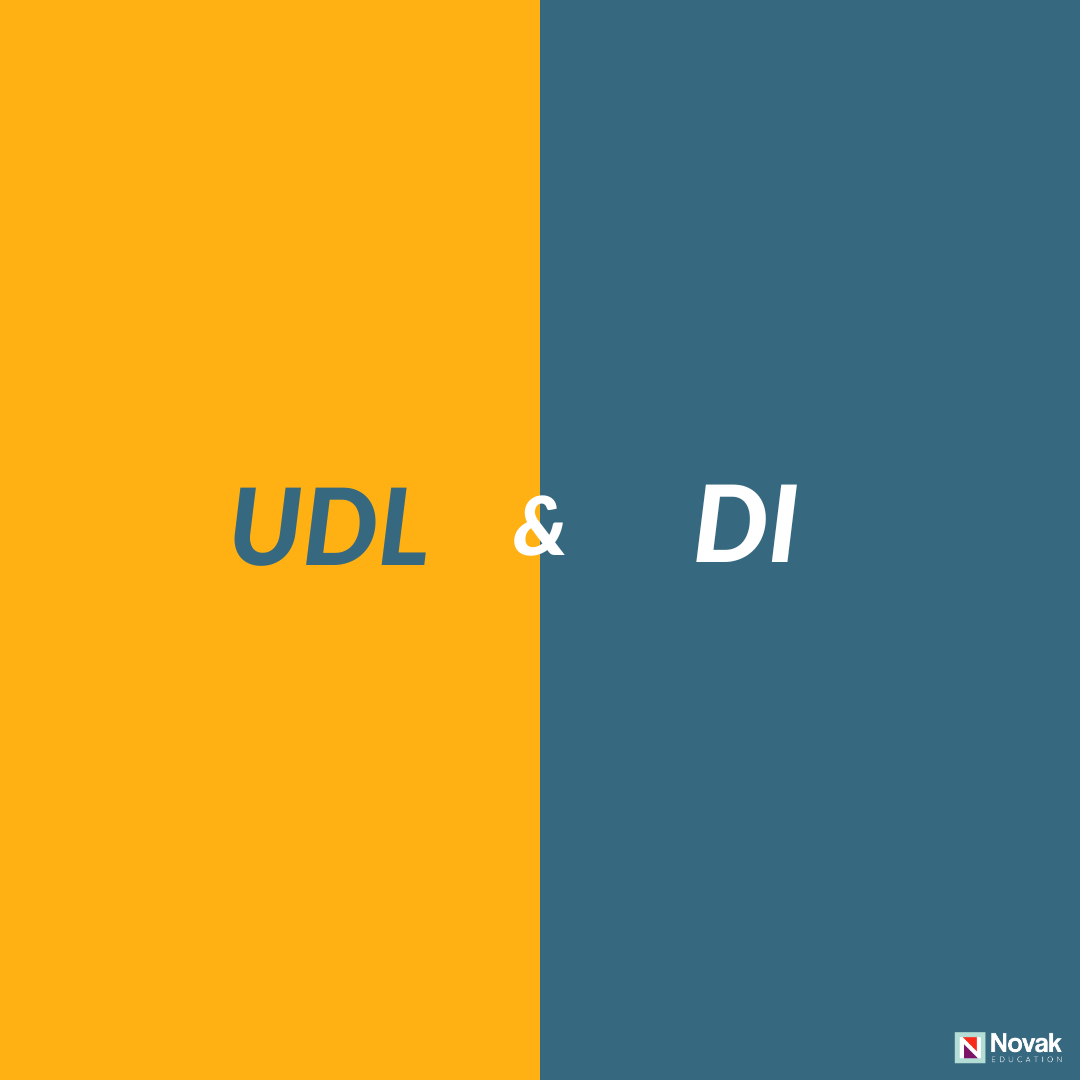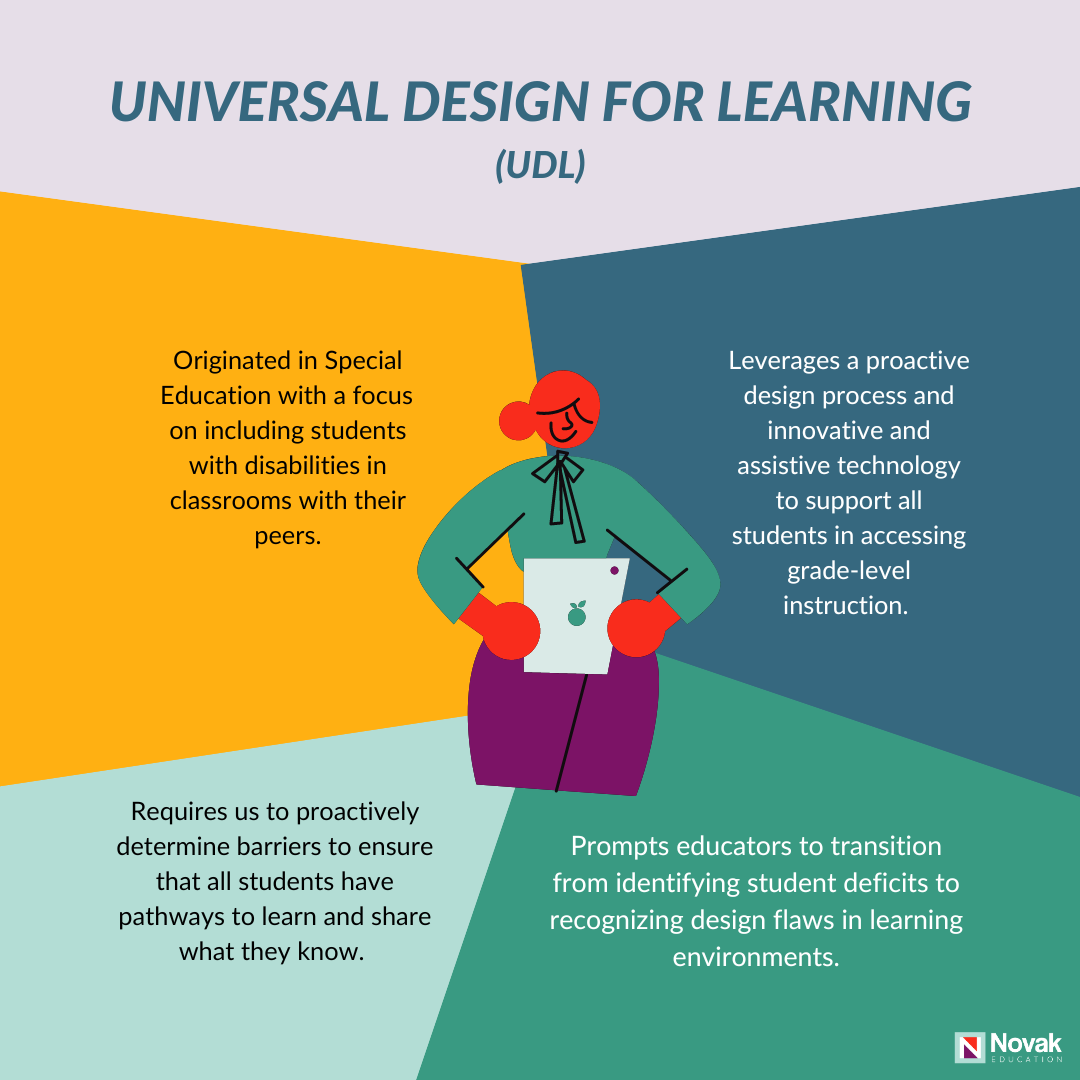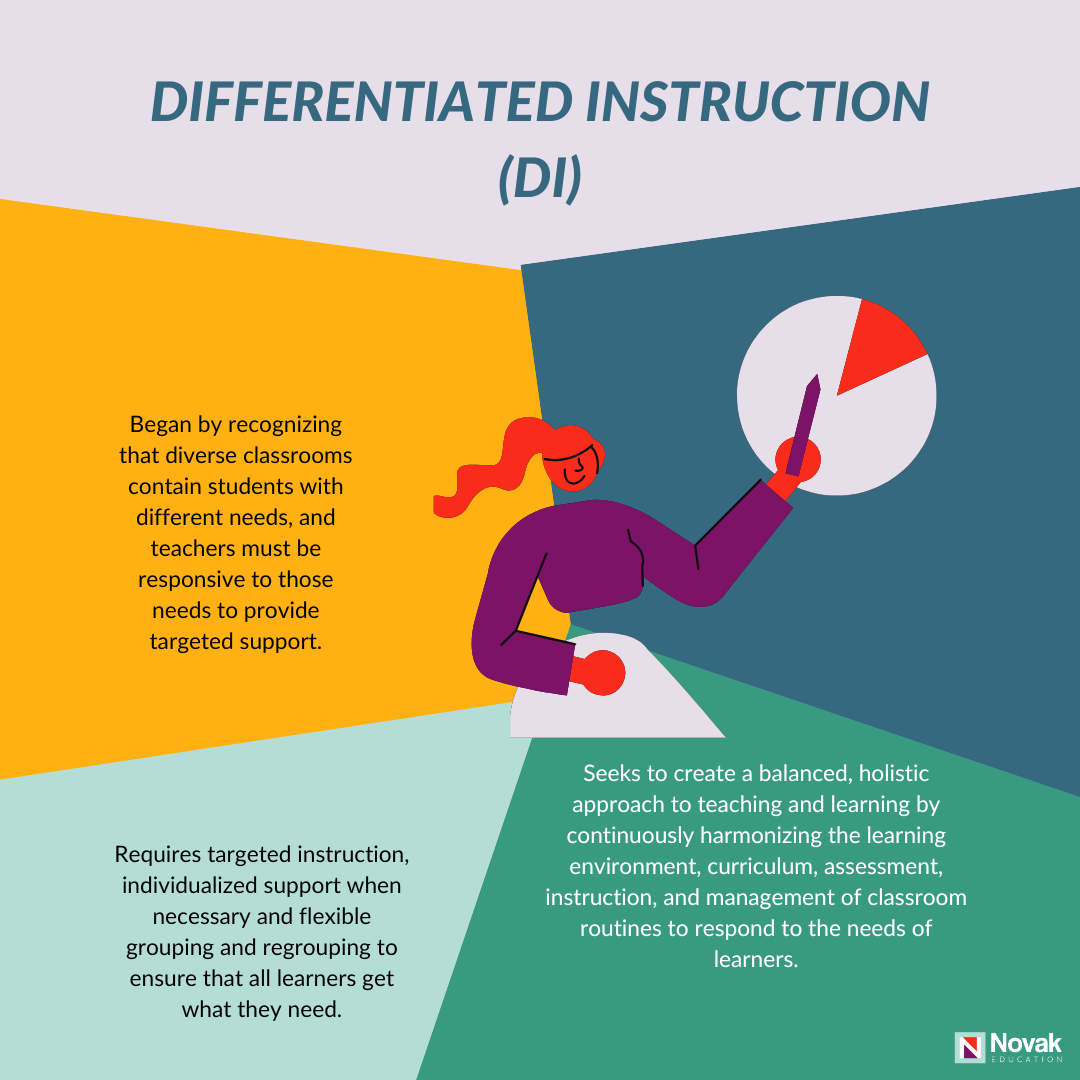Universal Design for Learning (UDL) and Differentiated Instruction (DI) are two powerful educational frameworks with a shared goal of revolutionizing inclusive education. Historically, we have discussed the differences between UDL and DI, but just as our students have evolved, so have these frameworks. So when faced with the question, “What is the relationship between UDL and DI?” Ultimately, it may not matter.
I recently had a discussion with THE Mother of DI, Carol Tomlinson, as we are both working toward the same goal of creating flexible classrooms that work for all learners. I shared my interpretation that UDL is focused on the proactive design or the blueprint of a learning environment that works for all learners while differentiated instruction takes a more responsive approach to finessing the UDL design to ensure that it works for the learners in the room. She shared that she had no problem with that distinction - and also noted that as DI continues to evolve, she describes the framework as “proactive responsiveness,” which blurs the lines between the frameworks a bit more. Regardless of their overlap, both frameworks have the potential to transform teaching and learning. A helpful way to think of it is:
Universal Design for Learning is the "cool techy cousin," - it originated in special education with CAST which is formally the Center for Applied Special Technology. It first focused on including students with disabilities in classrooms with their peers. It leverages a proactive design process and innovative and assistive technology to support all students in accessing grade-level instruction. It prompts educators to transition from identifying student deficits to recognizing design flaws in learning environments. Essentially, UDL requires us to proactively determine barriers to ensure that all students have pathways to learn and share what they know.
Differentiated Instruction is the "big picture cousin," - it started by recognizing that diverse classrooms contain students with different needs, and teachers must be responsive to those needs to provide targeted support. DI seeks to create a balanced, holistic approach to teaching and learning by continuously harmonizing the learning environment, curriculum, assessment, instruction, and management of classroom routines to respond to the needs of learners. This requires targeted instruction, individualized support when necessary and flexible grouping and regrouping to ensure that all learners get what they need.
Both frameworks require second-order change—a deep, fundamental system transformation and a move away from one-size-fits-all learning.
What the Research Says: UDL and DI
The benefits of UDL and DI are well-supported by research but the lines between the framework continue to blur. What we do know is that traditional, one-size-fits-all instruction is not effective. I’d like to read a section from an article in the Hechinger Report:
For centuries, we have believed that there is only one way for students to learn – go to school, sit at a desk, do what the teacher says and take tests. We’ve operated schools as if they were industrial factories, with teaching and learning practices that mimic assembly-line and batch-processing manufacturing. But we can no longer rely on the methods of the past. Today, we need more students achieving at high levels to ensure a more equitable and prosperous future for our communities. Schools need student-centered strategies, rather than a top-down, one-size-fits-all approach to education.
So, how do we move away from a one-size-fits all approach with UDL and DI? In pure UDL fashion, I am going to empower you to choose your learning journey,
Option One - Tune in to Episode Eight of The Education Table Podcast, where I share strategies for effectively implementing UDL and DI in schools.
Option Two - Embrace the data! It’s not “sexy” but it is sooo improtant. UDL and DI require the use of data to recognize and eliminate barriers. Regularly collect and analyze student data to identify specific needs and areas where students are struggling. Use this data to inform your teaching practices, making necessary adjustments to ensure all students have the support they need when they need it while working toward grade-level standards. This data-driven approach helps ensure that every student can succeed.
Ultimately, both Universal Design for Learning and Differentiated Instruction are crucial in transforming education from a standardized test-focused endeavor to one that prioritizes every student's holistic development and learning.
Place your students at the center of your learning. Explore our professional development options or contact our team to get started!
Citation:





